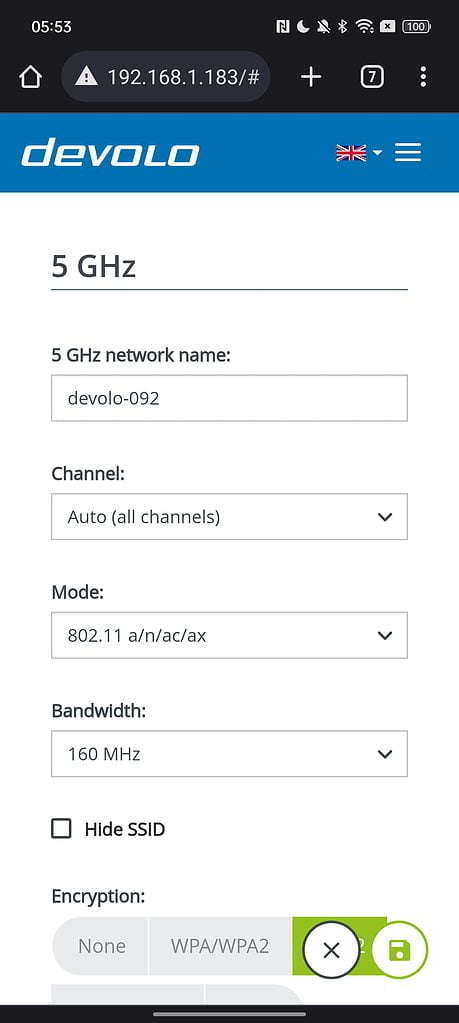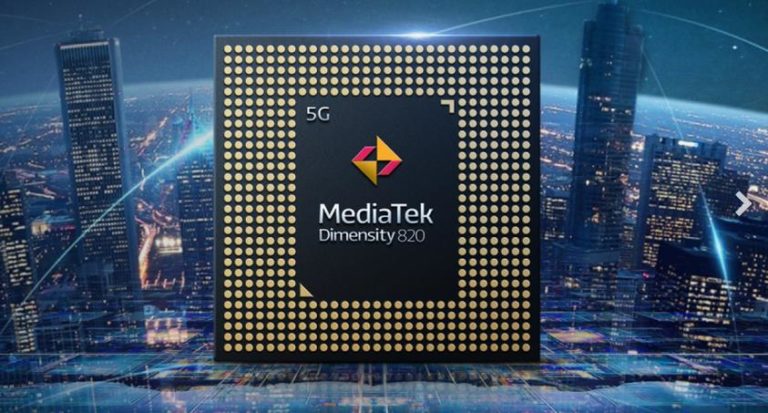Any links to online stores should be assumed to be affiliates. The company or PR agency provides all or most review samples. They have no control over my content, and I provide my honest opinion.
Devolo is perhaps best known for its range of dLAN and Magic powerline Wi-Fi extenders and mesh systems. Thanks to the G.hn technology they use for powerline, they have the best performing powerline systems on the market.
They also have a range of Wi-Fi repeaters. These have fallen out of fashion in recent years in favour of full mesh systems, but there are still quite a few repeater options on the market. With this new range of Wi-Fi 6 repeaters from Devolo, you get the same networking protocols you find in a mesh system, and this allows the repeaters to function in the same manner.
There are two options to choose from, the 5400 and 3000, with an RRP of £130 and £90, respectively.
| Preview | Product | Rating | Price | |
|---|---|---|---|---|

| Devolo Wifi 6 Repeater 5400 - | Buy on Amazon | ||

| Devolo Wifi 6 Repeater 3000 - |
£89.99 | Buy on Amazon |
Devolo Wi-Fi 6 Repeater 5400 & 3000 Specification
| devolo WiFi 6 Repeater | 5400 | 3000 |
|---|---|---|
| Radios | 2.4 GHz + 5 GHz Dual Band Dual concurrent | 2.4 GHz + 5 GHz Dual Band Dual concurrent |
| Standards | Wi-Fi 4/5/6 (IEEE 802.11 a/b/g/n/ac/ax/k/v/r) | Wi-Fi 4/5/6 (IEEE 802.11 a/b/g/n/ac/ax/k/v/r) |
| Mesh Compatible | Yes | Yes |
| Channel widths | 20/40/80/160 MHz | 20/40/80/160 MHz |
| Streams | 2x2 + 4x4 Multi-User-MIMO | 2x2 Multi-User-MIMO |
| Data Rates | 2,4 GHz up to 574 Mbps 5 GHz up to 4800 Mbps | 2.4 GHz up to 574 Mbps 5 GHz up to 2402 Mbps |
| Mode | Access Point Repeater | Access Point Repeater |
| Ethernet | 2x Gigabit | 1 x Gigabit |
| Price | RRP: £130 Amazon: £100 | RRP: £90 Amazon: £70 |
Set-Up


Devolo tries to force you into using their app for the setup, but both repeaters have a web interface, so you should be able to do things that way.
For my initial testing, I used the app. The Netgear Orbi 860 I tested this with lacks a WPS button, so I had to manually connect to the Devolo repeater, then select the network and provide the password.
The repeater will then set itself up using the same SSID as the router, and the system should work like a normal dual-band mesh system.




Access Point & 5GHz connectivity issues
Both of these repeaters can be set up as an access points. This is where you wire them into the network and should provide the best overall performance.
As I had set both of these up as repeaters to start off with, I had to go into the settings, select web interface (or just go directly to the IP on a browser). From there, I needed to go to assistant and install as Access Point.

Both of these repeaters support 160MHz bandwidth, so in theory, they should be able to provide superb Wi-Fi performance.
Unfortunately, I experienced some issues with this. They both have a problem with coexisting 2.4GHz and 5GHz networks. With both repeaters, when I tried connecting either with my phone or PC, they would connect to the slow 2.4GHz frequency rather than auto-negotiate to the 5GHz.
I then separated the two frequencies, but with both PC and mobile, I was unable to connect to 5GHz. When I went into the settings, it was choosing channel 112 for 5GHz, which just wasn’t working at all. Swapping the channel to auto (36-48) resolved this.
Then just to double check, I switched back to a coexisting network, with auto set to 36-48 for the 5GHz network, and everything worked as expected.
Devolo Response
It is possible the issues I experienced are user error. Channel 112 doesn’t always work and the device should auto-switch away from this channel is there are issues. It is possible I did not wait long enough:
The regulatory guidelines say that in a Wi-Fi network the master device (Wi-Fi access point/repeater/…) must check the 5GHz channels for 10 minutes before transmitting. If a primary transmitter is detected, this channel may not be used for 30 minutes, the so called NOP – non-occupancy period. The access point selects a random new channel and checks it according to CAC.”
This guideline is part of DFS (Dynamic Frequency Selection), which Wi-Fi access points have to respect in UK and EU to keep radar frequencies free. We believe you may not have waited the full time period for checks on 5GHz channels to be carried out.
Performance
I am currently in the process of reviewing the new Netgear Orbi 860 series mesh system, so I used the main router with the satellites switched off. The router is located central to my home, in my office on the first floor.
With mesh system reviews, I normally place one of the satellites in the front room where my partner normally watches TV. The front room is down one level, then across a hallway and on the far end of the room. It is quite a big brick-built house, so it can be challenging for Wi-Fi.
With this review, I did the same, but I also tested in the room directly below, so the Wi-Fi is only going down through a wooden floor.
Router Performance
- Close Range: 876Mbps
- Front Room: 14.4mbps
The Netgear Orbi 860 system costs over £1000, but it is limited by 80MHz bandwidth, so the peak throughput is actually lower than the much cheaper Devolo devices when used in access point mode.
Devolo Wi-Fi 6 Repeater 5400 Performance
- Front Room: 325mbps
- Middle Room: 396mbps
- Range: 330Mbps
- Access Point: 960Mbps
With this working the same way as a dual-band mesh system, you suffer from around 50% signal loss. Therefore, around 400mbps is the best speed to be expected.
When used in access point mode, my PC connects to the Wi-Fi at 2400Mbps, but the speeds end up being limited by the gigabit LAN interface.
Devolo Wi-Fi 6 Repeater 3000 Performance

- Front Room: 252mbps
- Middle Room: 352mbps
- Range: 232Mbps
- Access Point: 945Mbps
Price and Alternative Options
| Preview | Product | Rating | Price | |
|---|---|---|---|---|

| Devolo Wifi 6 Repeater 5400 - | Buy on Amazon | ||

| Devolo Wifi 6 Repeater 3000 - |
£89.99 | Buy on Amazon |
The pricing for the two repeaters at the time of writing is:
- Devolo Wi-Fi 6 Repeater 5400
- RRP: £130
- Amazon: £100
- Devolo Wi-Fi 6 Repeater 3000
- RRP: £90
- Amazon: £70
It turns out there are quite a few Wi-Fi 6 repeaters no and most of these support mesh-like functionality, using one SSID with fast roaming.
Netgear has:
- EAX12: £60
- EAX20: £100
- EAX80: £185
D-Link has the E15 Eagle Pro for just £32.
TP-link has:
- RE500X: £47
- RE605X: £60
The TP-Link options have OneMesh, so if you have a TP-Link OneMesh router, it shouldn’t be able to seamlessly integrate into a proper dual-band mesh system.
Overall
Both the 5400 and 3000 repeaters are excellent. As repeaters, you get the same sort of performance you would expect from a dual-band Wi-Fi 6 mesh system, which makes sense because that’s basically what you are creating.
As access points, you have a small bump in performance compared to many access points on the market, thanks to the 160MHz bandwidth. The limiting factor is the gigabit ethernet.
I’d say pricing is a bit high, but if you look at the competing options. None of them supports 160MHz except the £185 Netgear EAX80. However, you would need to consider how useful this is to you, when used as a repeater, you are unlikely to see any benefit.
I’d say that both the 5400 and 3000 are equally good based on price/features/performance.
Devolo Wi-Fi 6 Repeater 5400 & 3000 Review Rating
Summary
Both the Devolo Wi-Fi 6 repeater 5400 & 3000 are excellent repeaters. They work better than the old-fashioned style of repeaters that create a separate SSID. These end up working like a dual-band mesh system. As access points, they provide excellent performance and are relatively cheap compared to similarly specced devices.
Overall
80%-
Overall - 80%80%
Pros
- Good performance as repeaters and easy to set up
- Excellent performance as an access point
- Affordable compared to other 160Mhz equipped access points
Cons
- Quite expensive vs competing options
I am James, a UK-based tech enthusiast and the Editor and Owner of Mighty Gadget, which I’ve proudly run since 2007. Passionate about all things technology, my expertise spans from computers and networking to mobile, wearables, and smart home devices.
As a fitness fanatic who loves running and cycling, I also have a keen interest in fitness-related technology, and I take every opportunity to cover this niche on my blog. My diverse interests allow me to bring a unique perspective to tech blogging, merging lifestyle, fitness, and the latest tech trends.
In my academic pursuits, I earned a BSc in Information Systems Design from UCLAN, before advancing my learning with a Master’s Degree in Computing. This advanced study also included Cisco CCNA accreditation, further demonstrating my commitment to understanding and staying ahead of the technology curve.
I’m proud to share that Vuelio has consistently ranked Mighty Gadget as one of the top technology blogs in the UK. With my dedication to technology and drive to share my insights, I aim to continue providing my readers with engaging and informative content.
Last update on 2025-07-09 / Affiliate links / Images from Amazon Product Advertising API







